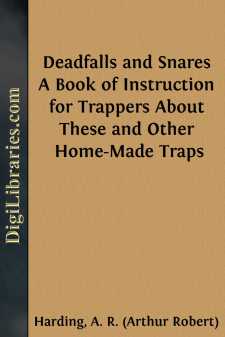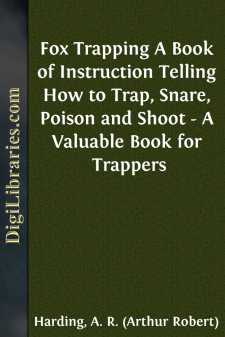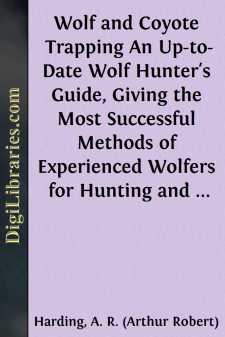Categories
- Antiques & Collectibles 13
- Architecture 36
- Art 48
- Bibles 22
- Biography & Autobiography 813
- Body, Mind & Spirit 142
- Business & Economics 28
- Children's Books 17
- Children's Fiction 14
- Computers 4
- Cooking 94
- Crafts & Hobbies 4
- Drama 346
- Education 46
- Family & Relationships 57
- Fiction 11829
- Games 19
- Gardening 17
- Health & Fitness 34
- History 1377
- House & Home 1
- Humor 147
- Juvenile Fiction 1873
- Juvenile Nonfiction 202
- Language Arts & Disciplines 88
- Law 16
- Literary Collections 686
- Literary Criticism 179
- Mathematics 13
- Medical 41
- Music 40
- Nature 179
- Non-Classifiable 1768
- Performing Arts 7
- Periodicals 1453
- Philosophy 64
- Photography 2
- Poetry 896
- Political Science 203
- Psychology 42
- Reference 154
- Religion 513
- Science 126
- Self-Help 84
- Social Science 81
- Sports & Recreation 34
- Study Aids 3
- Technology & Engineering 59
- Transportation 23
- Travel 463
- True Crime 29
Deadfalls and Snares A Book of Instruction for Trappers About These and Other Home-Made Traps
Description:
Excerpt
CHAPTER I.
BUILDING DEADFALLS.
During the centuries that trapping has been carried on, not only in America, but thruout the entire world, various kinds of traps and snares have been in use and taken by all classes of trappers and in all sections the home-made traps are of great numbers. The number of furs caught each year is large.
The above was said by a trapper some years ago who has spent upwards of forty years in the forests and is well acquainted with traps, trappers and fur-bearing animals. Whether the statement is true or not, matters but little, altho one thing is certain and that is that many of the men who have spent years in trapping and have been successful use the deadfalls and snares as well as steel traps.
Another trapper says: In my opinion trapping is an art and any trapper that is not able to make and set a deadfall, when occasion demands, does not belong to the profession. I will give a few of the many reasons why dead falls are good.
- There is no weight to carry.
- Many of the best trappers use them.
- It requires no capital to set a line of deadfalls.
- There is no loss of traps by trap thieves, but the fur is in as much danger.
- Deadfalls do not mangle animals or injure their fur.
- It is a humane way of killing animals.
- There is no loss by animals twisting off a foot or leg and getting away.
- Animals are killed outright, having no chance to warn others of their kind by their cries from being caught.
- Trappers always have the necessary outfit (axe and knife) with them to make and set a deadfall that will kill the largest animals.
- The largest deadfalls can be made to spring easy and catch small game if required.
- Deadfalls will kill skunk without leaving any scent.
- Deadfalls are cheap and trappers should be familiar with them.
It is a safe proposition, however, that not one-half of the trappers of today can build a deadfall properly or know how to make snares, and many of them have not so much as seen one.
First a little pen about a foot square is built of stones, chunks, or by driving stakes close together, leaving one side open. The stakes should be cut about thirty inches long and driven into the ground some fourteen inches, leaving sixteen or thereabout above the ground. Of course if the earth is very solid, stakes need not be so long, but should be so driven that only about sixteen inches remain above ground. A sapling say four inches in diameter and four feet long is laid across the end that is open. A sapling that is four, five or six inches in diameter, owing to what you are trapping for, and about twelve feet long, is now cut for the "fall." Stakes are set so that this pole or fall will play over the short pole on the ground. These stakes should be driven in pairs; two about eighteen inches from the end; two about fourteen farther back. (See illustration.)
THE POLE DEADFALL.
The small end of the pole should be split and a small but stout stake driven firmly thru it so there will be no danger of the pole turning and "going off" of its own accord. The trap is set by placing the prop (which is only seven inches in length and half an inch thru) between the top log and the short one on the ground, to which is attached the long trigger, which is only a stick about the size of the prop, but about twice as long, the baited end of which extends back into the little pen....








